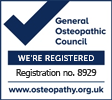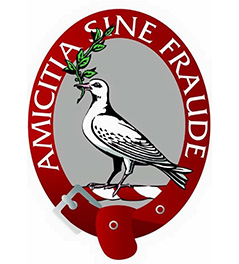A back spasm can occur after any type of strain or injury to the soft tissues—the muscles, tendons or ligaments—in the spine. Following the general treatment guidelines below and the recommendations from your doctor or Osteopath will go a long way in relieving your pain, and your back muscles should calm down in a week or so.
The muscles can spasm in response to an underlying anatomical problem
If your back spasm does not get better in 1 to 2 weeks, or it comes and goes over time in the same area of your back, you may have an underlying anatomical problem in your spine. Examples of underlying issues that could cause your back to spasm include:
-Facet joint osteoarthritis
-Degenerative disc disease
-Spinal stenosis
-Pain from a herniated disc
In these cases, the pain is coming from the anatomical problem, and the muscle instinctively reacts to the pain and inflammation by going into a spasm. If this is the case for you, then you will want to seek medical attention of an osteopath in order to treat not just the acute pain but also to address the underlying cause of your symptoms.
First aid for a painful back muscle spasm…….4 helpful tips !
When your back goes into spasm, the first step is to get some immediate relief from the intense pain. The initial goal of treating the muscle spasm is to get the muscle to relax, thus relieving the pain. Some effective treatments include-
1/Cold therapy
Applying ice wrapped in a protective sheath or towel, or a cold pack, to the painful part of your back is another way to help relieve an acute flare up of pain. As a general guideline, cold therapy will help reduce local inflammation, which in turn contributes to relieving pain. You can use a commercial ice pack or make one yourself. For example, you can put some ice or frozen vegetables into a baggie, add some water to smooth out the lumps, double bag to prevent leaking, cover it in a towel to protect your skin from ice burn, and apply it to the painful area of your back.
2/NSAIDs
A nonsteroidal anti-inflammatory medication (NSAID) can help reduce inflammation and pain. Examples of over-the-counter NSAIDs include ibuprofen (e.g. Advil, Motrin), naproxen (e.g. Aleve), and aspirin. Some people find that acetaminophen (e.g. Tylenol), which addresses pain but not the inflammation, is effective.
3/Reduce stress on your back
For a severe muscle spasm, you may find movement is too painful and you need to rest. When you rest, you can reduce stress on your lower back by laying on your back in bed with your upper body supported at a slight incline and a pillow propped under your knees, or sitting at an incline in a reclining chair with your legs supported and knees slightly bent and back softened(not bolt upright!)
4/Walk or Swim as much as possible
To whatever extent possible, try to get up and move as much as possible. For example, this could mean a day of mainly rest, followed by a day that includes several short walks around the house, followed by a day with a short walk every hour or half hour, or longer walks as tolerated. Prolonged inactivity will stiffen your muscles and will likely lead to more pain. In general, walking or swimming is gentle on your back and promotes blood flow, which in turn helps speeds the healing process.


















